I’m celebrating this Halloween by writing about eight of my favourite spooky fungi! Some are frightening in name only while others are truly a thing of nightmares. From body snatchers, to bloody fruiting bodies, to eerie nighttime glowing, these fungi might be scary, but they’re also very cool!
Dead Man’s Fingers (Xylaria polymorpha)
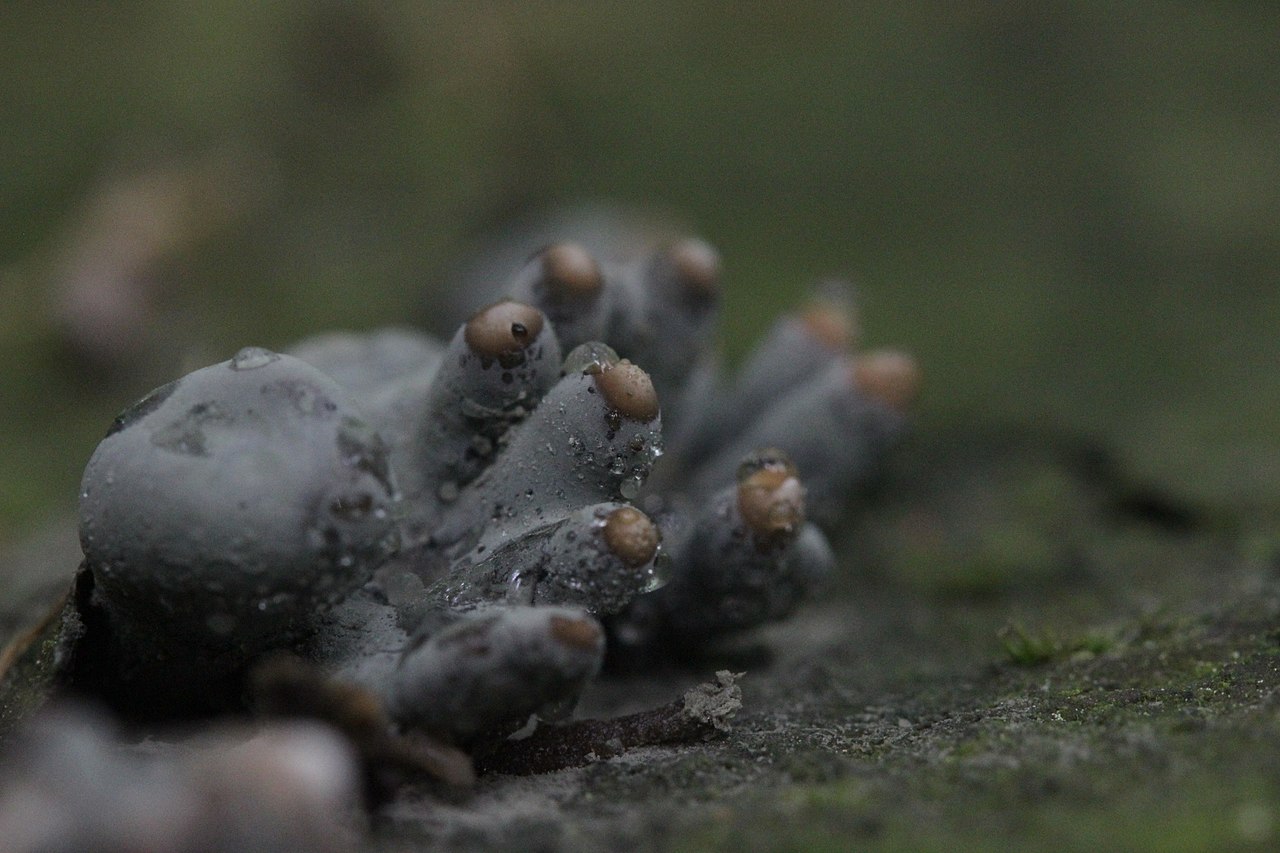
Dead man’s fingers, scientifically known as Xylaria polymorpha, looks like rotting human fingers! Its appearance changes with its lifecycle. In spring, it’s pale blue, darkening to black in summer and fall as it matures. In either stage, when it grows in close clusters, it emerges from rotting wood resembling dead or diseased hands.
Despite its eerie appearance, this fungus plays a crucial role in the ecosystem by breaking down and recycling organic material. Dead man’s fingers is a saprotrophic fungus, obtaining its nutrients and energy by decomposing dead and decaying matter.1
Witches’ Butter (Tremella mesenterica)
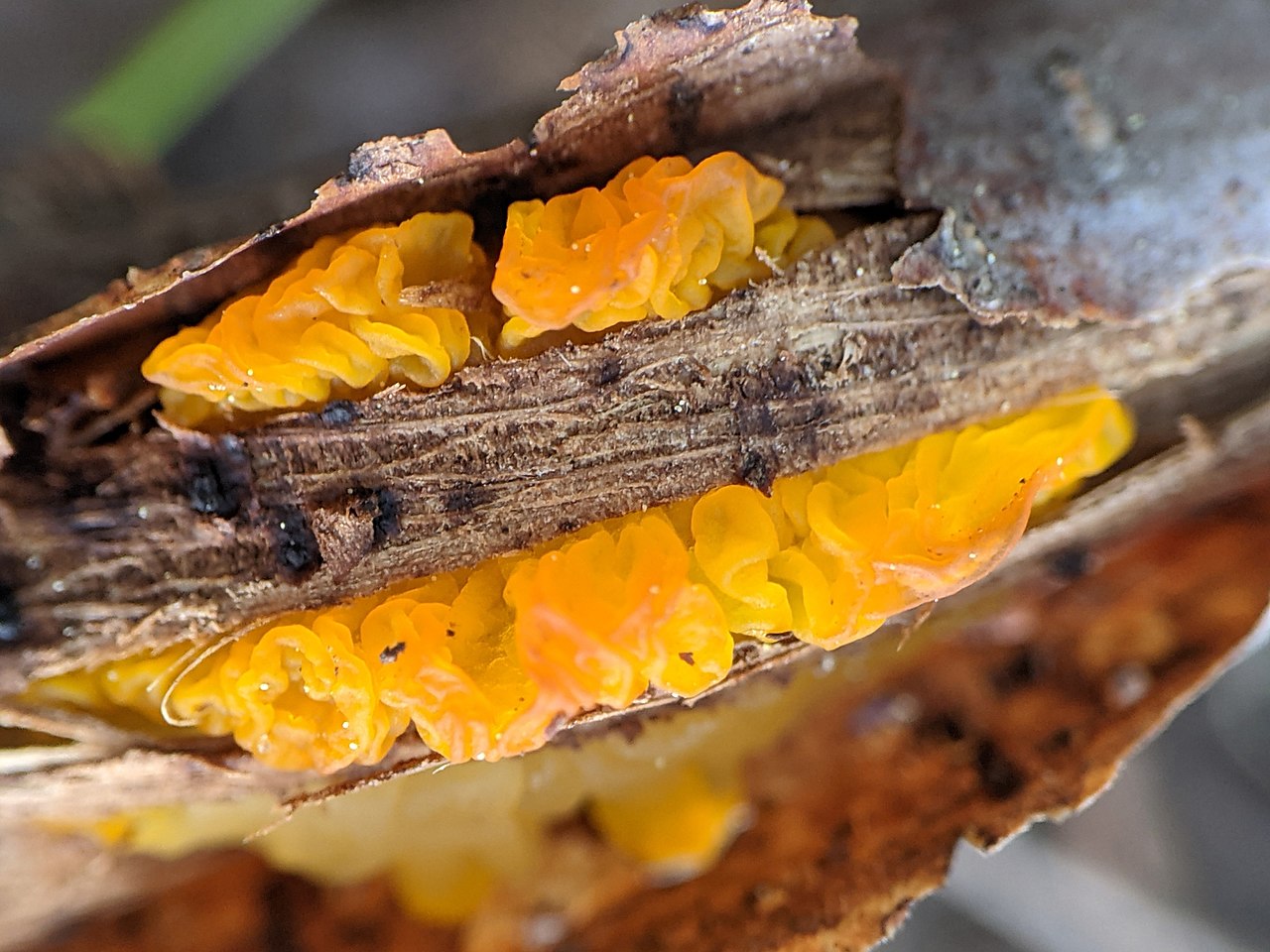
Double, double toil and trouble. Fire burn and caldron bubble! Witches’ butter does indeed look like something a witch would brew. This neon jelly fungus resembles a slimy brain-like blob. Its scientific name is even more gruesome, Tremella mesenterica, translates to “trembling middle intestines.”2
In Eastern European folklore, discovering witches’ butter growing on your door frame signified a curse on your home and family. The only way to break the spell was to puncture the mushroom and drain its juices.2 But, once infected, the mushroom would keep coming back. Thankfully, today’s chemical wood sealants keep the witches away!2
Witches’ butter is a parasite of Peniophora fungi, which prey on deciduous trees. You may find the crust-like fungi it feeds on elsewhere on the infected tree.3
Destroying Angel (Amanita sp.)
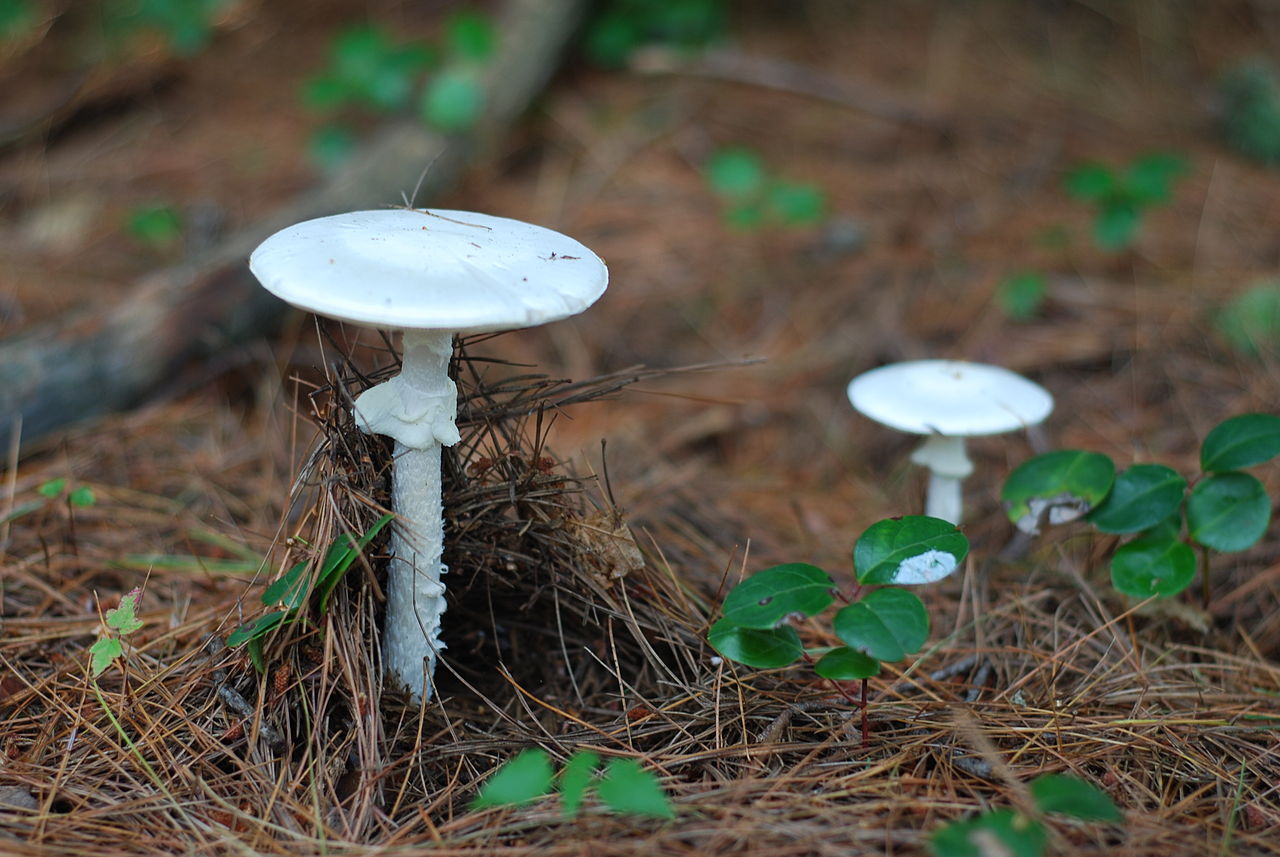
Destroying angel is a colloquial term used to describe several deadly and closely related species of white, toxic mushrooms within the Amanita genus. Common species are A. virosa, A. bisporigera, A. ocreata, A. verna, and A. smithiana.4 These fungi might not look menacing, but don’t be fooled. Eating one is a horrific experience. It only takes 7mg of amatoxin to kill an adult.5 It’s a prolonged and painful death.
Eight to twenty-four hours after ingesting amatoxin, violent vomiting and diarrhea ensue. These symptoms might be mistaken for food poisoning, but something much more sinister is happening. Once eaten, amatoxin binds to enzymes that transcribe your DNA, rendering your cells incapable of reading vital life-sustaining instructions.5 To make matters worse, people often delay treatment because their gastrointestinal symptoms disappear once the toxin clears from the GI tract. But, wellness is an illusion as their liver is slowly being killed.5
There is no antidote. Treatment mainly involves supportive care, including hospitalization, intravenous fluids, and potentially a liver transplant in severe cases.
Bleeding Fairy Helmet (Mycena haematopus)
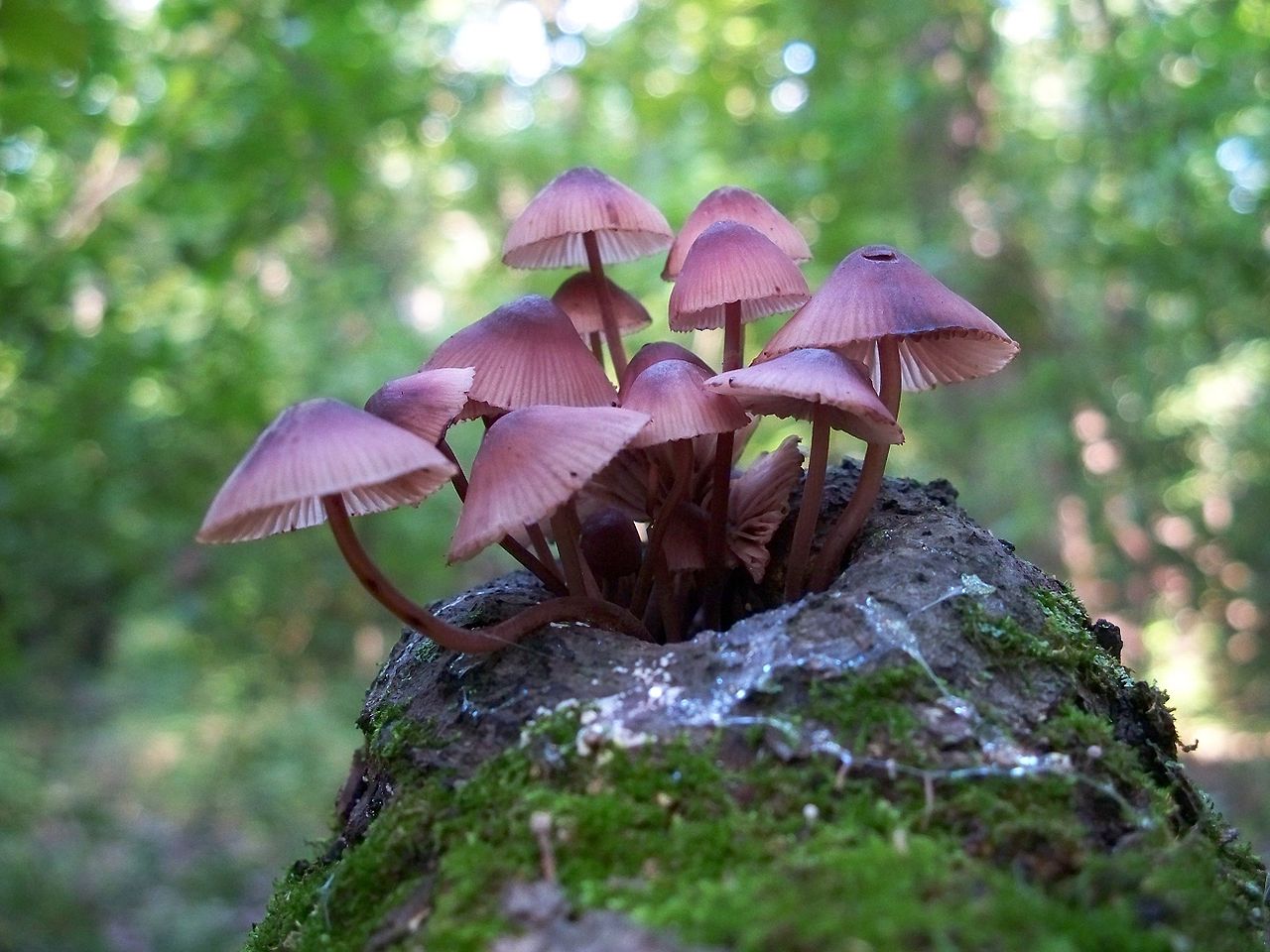
Bleeding fairy helmet is a beautiful burgundy mushroom that grows on dead hardwood trees. Scrap or cut it and it oozes a blood-like liquid that stains your fingers. This bloodletting ability varies with freshness, age, substrate moisture, and cutting technique, ranging from a trickle to a gushing flow.6 The “blood” is actually latex and it’s believed to be a defence mechanism against predators.
Jelly Ear Fungus (Auricularia auricula-judae)
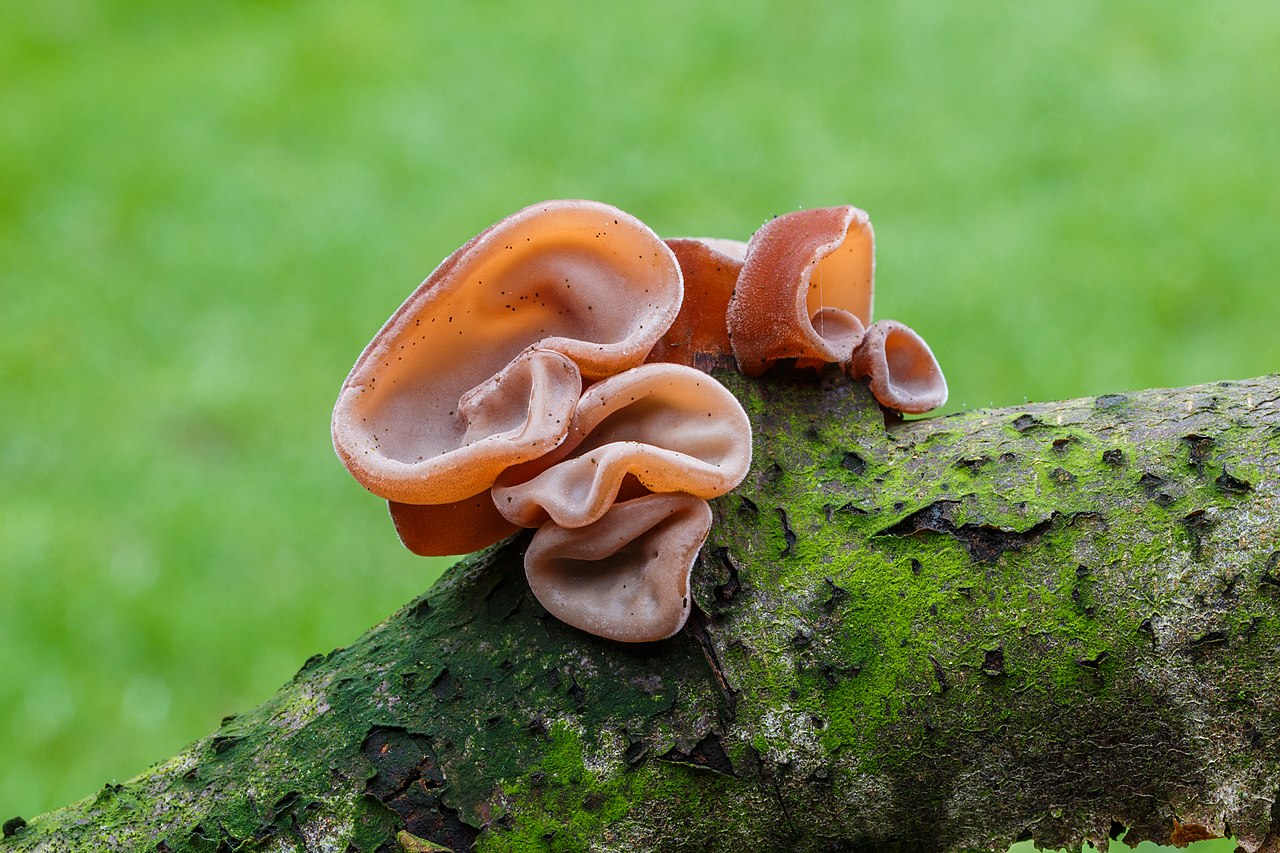
Jelly ear is another mushroom that looks disturbingly like a human appendage! Its scientific name, Auricularia auricula-judae, carries a sinister origin from Christian folklore. “Auricula” stems from the Latin word for “ear” and “Judae” alludes to the belief that this mushroom grew on the tree where Judas Iscariot hanged himself for betraying Jesus Christ.7 According to Christian legend, the fungal “ears” emerging from elder trees are remnants of Judas’ tormented spirit.7
Devil’s Tooth (Hydnellum peckii)
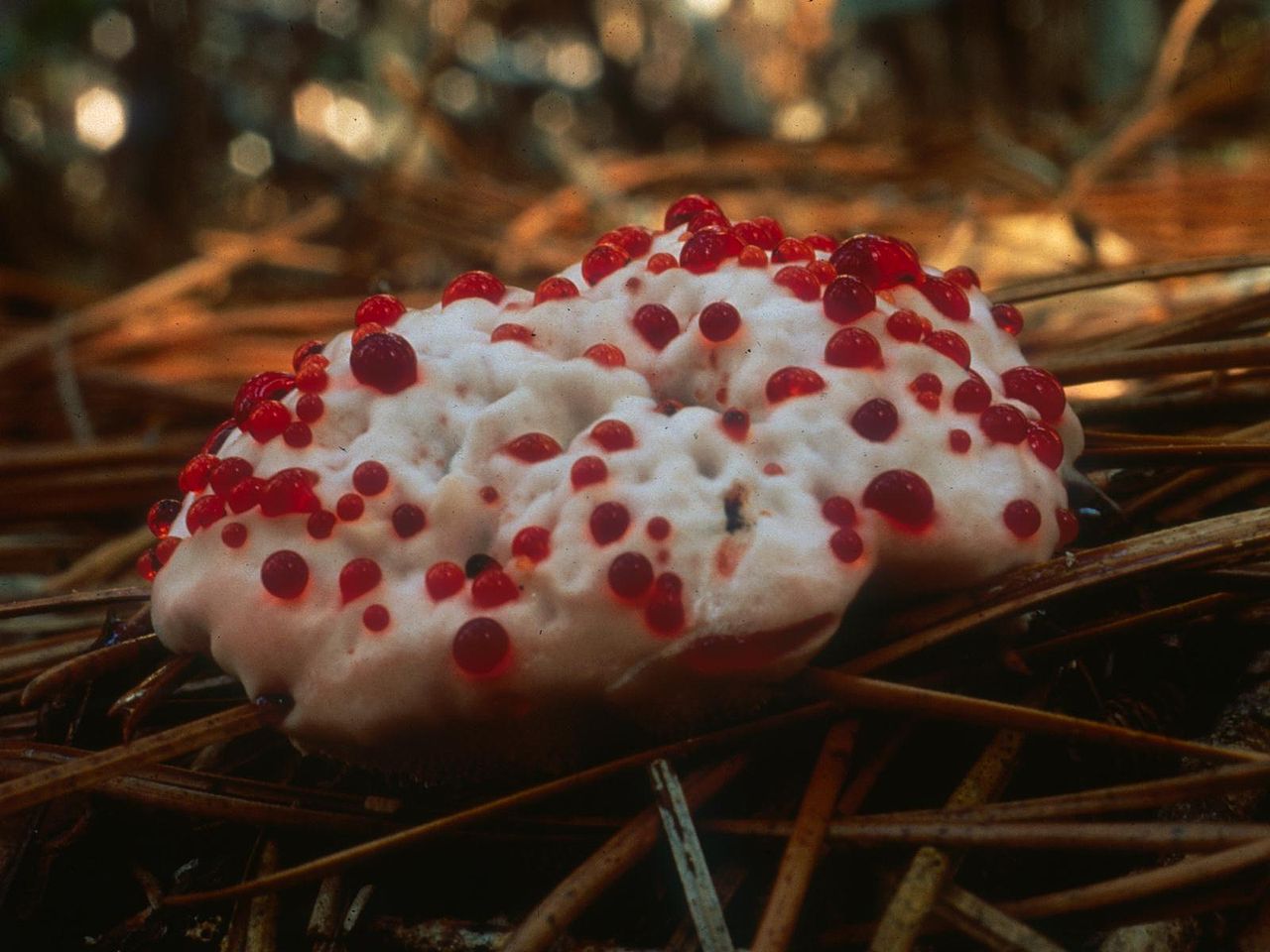
Bad day at the dentist? Some people describe devil’s tooth fungus as looking like bloodied teeth. The fruiting body of this fungus has spines or teeth-like structures hanging from its underside. When young, the cap may exude a gooey red liquid that looks like blood. The red droplets are a result of guttation, a process in which internal pressure changes within the mushroom drive liquid through small openings.8 The red colour is due to a pigment found in the fungus.8
Devil’s tooth fungus is a mycorrhizal fungus, forming a symbiotic relationship with trees. It assists in nutrient uptake and helps in maintaining a healthy forest ecosystem.
Zombie Fungus
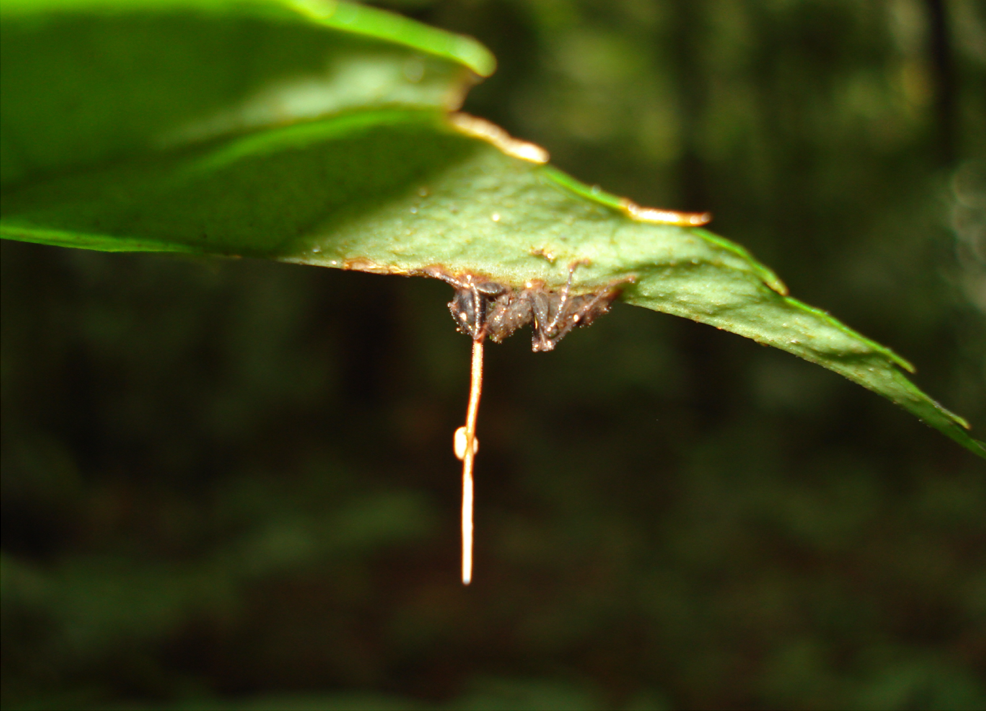
Zombie fungi are literal body snatchers who infect and manipulate the minds of insects and other arthropods. Lucky for us, they can’t control humans…yet!
Perhaps the most well-known zombie fungus, Ophiocordyceps unilateralis, infects ants and hijacks their minds forcing them to leave the safety of their colonies. Against its will, an infected ant will climb up a plant stem looking for the ideal growing conditions for its host. Once it finds them, it locks its mandibles around the plant and is killed by the fungus.9 Then, something truly horrific happens, the fungus grows a stalk out of the ant’s lifeless head and showers the ants below with spores turning them into zombies.9
Jack-O’-Lantern (Omphalotus illudens)
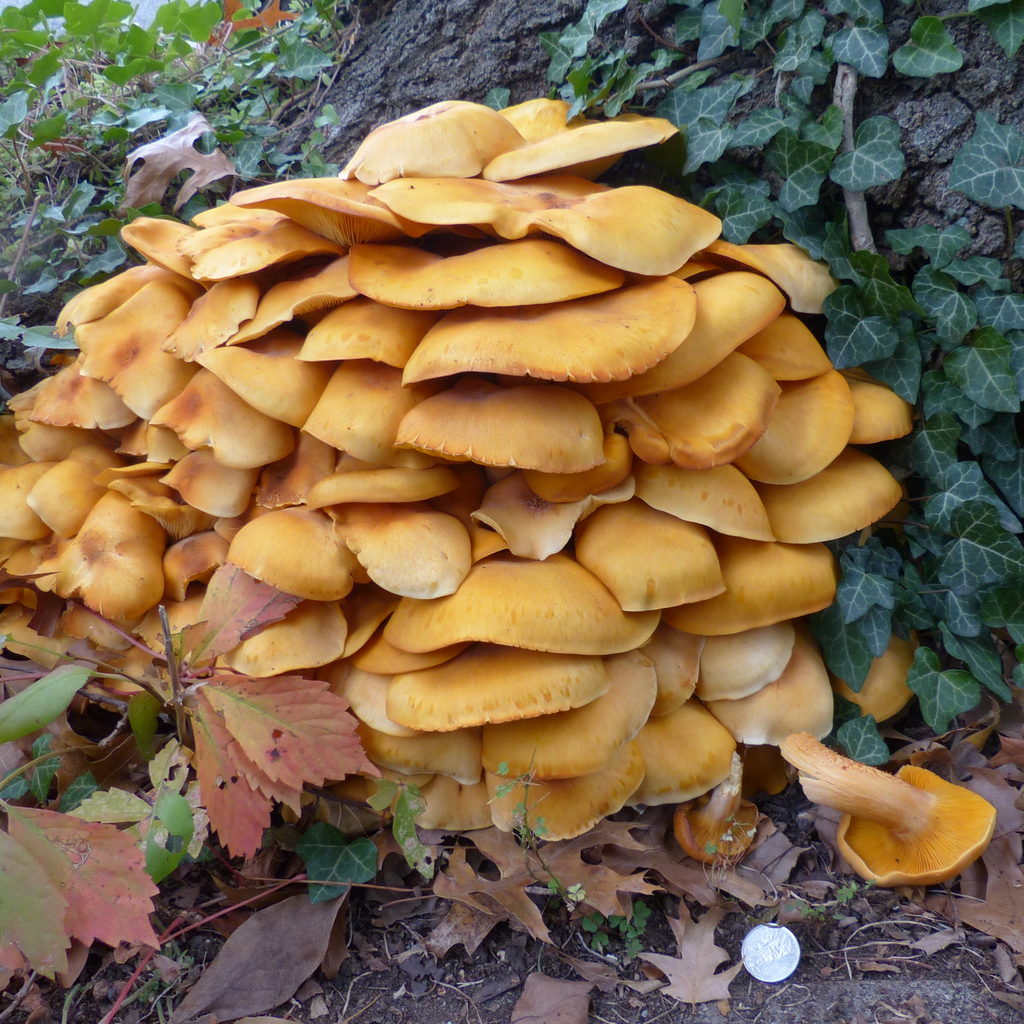
The jack-o’-lantern mushroom, scientifically known as Omphalotus illudens, is named for its vibrant pumpkin-coloured cap that can glow in the dark! The gills of this fungus emit an eerie, greenish glow, giving it a ghostly appearance. This glowing is called bioluminescence and several mushrooms do it to attract insects who help spread their spores.10
In European folklore, the jack o’lantern was associated with mischievous spirits or will-o’-the-wisps, believed to lead wanderers astray.11 The glowing gills also led to tales of lost travellers finding their way home in the dark.11
Spooky Fungi
There you have it, eight spooky fungi for the Halloween season. Which one do you think is the most haunting? Let me know in the comments section. Wishing you a happy and safe Halloween!
Other Posts You Might Enjoy
Tree Lungwort (Lobaria pulmonaria)
Petrichor: The Smell of Rain and Why We Love It
Why Do Birds Sing in the Early Morning?
Monarchs: Resilience in the Face of Fragility and Adversity
References
1 Christine Engelbrecht. “Helpful Fungus Among Us.” Iowa State University.
2 Jenny. 2022. “Witches’ Butter: Species, Foraging, and Cooking This Odd Fungus.” Mushroom Appreciation.
3 Missouri Department of Conservation. “Witches’ Butter.”
4 Parang Mehta. 2022. “Death Angel Mushrooms.” WebMD.
5 “What It Feels Like When You Eat a Deadly Mushroom.” 2023. Outside Podcast.
6 Thomas J. Volk. 2002. “Tom Volk’s Fungus of the Month for June 2002: Mycena haematopus.” University of Wisconsin-La Crosse.
7 “Auricularia auricula-judae (Bull.) Wettst. – Jelly Ear Fungus.” First Nature.
8 Kirstin Fearnley. 2016. “Weird & Wonderful Creatures: Bleeding Tooth Fungus.” AAAS.
9 Ed Yong. 2017. “How the Zombie Fungus Takes Over Ants’ Bodies to Control Their Minds.” The Atlantic.
10 Sarah Fesmire. 2015. “Foxfire and Fungi: Solving a 2,300 Year-Old Mystery.” University of Chicago Library News.
11 Jenny. 2023. “The Jack O’Lantern Mushroom.” Mushroom Appreciation.